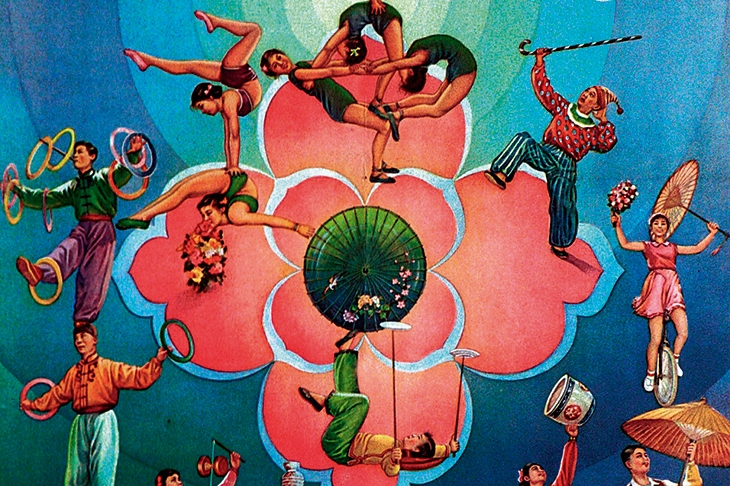We’re celebrating 250 years of circus this year. In 1768, the retired cavalryman and entrepreneur Philip Astley, together with his trick-rider wife Patty Jones (whose act was to gallop around the ring smothered in a swarm of bees) took a piece of rope, laid it in a circle on a piece of marshy land at London’s South Bank, and filled it with astonishing acts — tumblers, acrobats, jugglers, clowns. This was the very first circus. Every circus, anywhere in the world, began at that moment. The extraordinary new art form — a collection of street acts and horse tricks, infused with spectacle and risk and set in a circle — quickly trotted off around the world. It first sailed to Dublin, then spread throughout Europe and over to America, India and Australia. There has even been a circus in Antarctica. It’s Britain’s most successful cultural export.
Circus arrived in France in 1774, just six years after the first circus. French circus still flourishes, with an internationally acclaimed state-supported circus school in Chalons de Champagne and five circuses to appear concurrently this Christmas in Paris, one run by the book’s author. As Pascal Jacob points out, circus is an ‘intuitive diaspora’. A distinguished circus promoter and cultural historian, Jacob has donated his vast private collection to the French National Library. Most of the illustrations in this beautiful book — vibrant posters, architectural drawings of circus buildings and group photographic portraits of performers — come from there. These images are the stars of The Circus.
Controversially, Jacob begins his visual history not in 18th-century London, but in Mesopotamia and other ancient communities, ‘fascinated by balancing skills and great leaps in the air, feats of prowess on a tightrope or the skilful manipulation of objects’.








Comments
Join the debate for just £1 a month
Be part of the conversation with other Spectator readers by getting your first three months for £3.
UNLOCK ACCESS Just £1 a monthAlready a subscriber? Log in